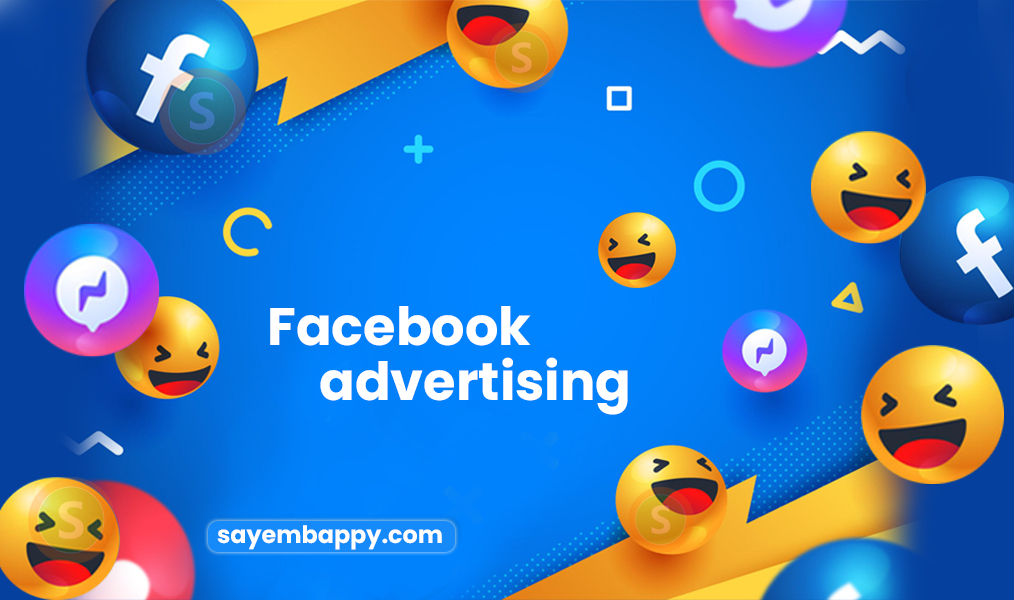
You have now decided to develop your own digital marketing strategy. What's next? You'll find out in this article how to go about the process. This includes choosing your channel, researching your audience, and then the final step. This article will also help you to create a customer path and split test a strategy. This will allow you to see if your new strategy works for your brand. If your strategy is not working, you are not the only one. There are many other businesses asking the same questions: "How do you start a digital advertising strategy?"
Researching your audience
To create a digital marketing strategy, you need to research your audience. Quantitative research involves analyzing large numbers and creating statistical results. To create an email marketing campaign targeted at a specific audience, it is important to understand their needs and interests. Similar to their purchase history, you can use this information to determine their buying behavior. This allows you to target your marketing messages to specific audiences.
A successful digital marketing strategy requires you to get to know your audience. You will not be able understand their wants and needs if you don't conduct research. Research can help you to identify these issues and create personalized content for them. Doing research will allow you to anticipate their needs and help you market more effectively. These are some tips to help you research your audience.
Interviews: You can use surveys to better understand your audience. You can ask existing customers via email, publish customer reviews on social media, and conduct interviews. These surveys will give you valuable information on what makes your audience tick. You can then develop your digital marketing strategy. Researching your audience is crucial, but it's also essential to create a compelling campaign. This will enable you to reach your audience and increase sales.
Segmentation - By understanding your audience's lifestyle, interests and preferences, you can tailor the messaging to them. Segmentation will allow you to craft a stronger message and interact with your customers in a more personal way. Adidas, for example, sent a gender-specific email to its customers, while the clothing company categorised its audience by gender. The vast majority of customers buy jeans and a survey asking them to rate the retailer would yield an average score of 8/10.
Choosing channels
Your product or service promotion will be enhanced by digital marketing channels. Your objectives, competition, budget, as well as your primary objectives should be considered when choosing a digital marketing channel. Different channels deliver different results. Be wise and choose which one works best for you. You will need to choose which channels you use to determine the types of content you want and how your ads are formatted. Content marketing is still the best form of marketing. It will always be relevant. However, if your goal is to reach your audience, this technology must be used.

The decision to use a particular digital marketing channel will depend on the goals of your business. Your long-term and short term goals should be determined. A long-term goal could be to increase revenue by 20% over the next two years, while a short-term goal might be to generate 400 sales qualified leads within six months or increase website traffic by 70% in eight months. So that you can decide which channels will work best, it is important to clearly identify your short-term (and long-term) goals.
Before you choose which channels to use, be sure to assess their effectiveness. Each channel is unique and has its strengths and weaknesses. Identify the type of creative content you will need for each channel, as well as its costs. You should make sure you have all of your budget available before you begin using new channels as part of your digital marketing strategy. If you want to create a buzz-generating campaign, you should use Facebook or Twitter.
Create a customer journey
A customer journey map is an essential element of any digital marketing strategy. These maps show the path a customer takes from decision to action. The customer journey map serves many purposes. For example, it can show the customer's journey from the initial stage of the sales funnel up to the moment when they become lifelong customers. The customer journey map can also help identify where improvements can be made.
A customer journey map is essentially a prospect's journey to purchase. This helps marketers to map the questions prospects ask and the problems they encounter along the way. The higher-funnel stage is aimed at increasing awareness and interest. While the last stage is aimed to foster brand loyalty, This process should begin with awareness, which can occur through social media, word of mouth, search engine suggestions, blogs, SMS, and apps.
After researching and learning about a brand, potential customers begin the information-gathering phase of the customer journey. They aren't sure who you are at first but they know what their needs are. Customers should be able to make an informed decision during this phase. In addition to this, brands can offer a free trial period to customers to eliminate any final obstacles in their purchasing process.
Marketers can use a customer journey map to help them target advertising by understanding how customers buy products and services. Each stage in the customer journey needs to have its own buyer persona. Marketers can tailor their marketing campaigns according to the goals of each stage by identifying these. A customer journey map is a tool that marketers can use to better understand their target audience. It identifies what motivates each customer's decisionmaking stage.
Split testing your strategy
Split testing in various areas of your digital strategy can make your business more profitable. Split testing can be used to improve headlines, page copy and button text. Images, social sharing buttons, email advertising, call to actions, and social media buttons are just a few examples. Here are some examples of scenarios you can test. Split testing allows you to identify which marketing tactics are most effective in increasing sales and profitability. It is important to select the correct sample size. Split testing should be done regularly and should be conducted with an appropriate confidence rating.
Split testing can be used to assess whether certain marketing strategies are successful or not, and make recommendations to optimize their effectiveness. Split testing also allows you to see if your online advertising strategy is generating leads, and whether it is bringing in return. Split testing lets you test out different versions of a website or specific elements. You can use the split test results to determine if your website makes money. Once you have identified which variations generate more leads you can make changes in your digital advertising strategy.

To get ideas for split tests, use the ClickFunnels ad library, which allows you to test 6 different versions of one advertisement. Another good place to get ideas for split tests is on Facebook. Facebook has many examples of ads that you can copy to find out which ones perform best. Split testing can be done on landing pages as well. For example, moving your CTA below the fold increased conversions by 304%, while removing it from the landing page caused cart abandonment rates to decrease by 33%.
Split testing is an integral part of conversion optimization. Split testing refers to dividing traffic between two groups, the control group and the variant. Split testing involves splitting traffic so that 50% of the traffic is shown the control variation, and the rest the variant. You divide traffic into equal segments and present one version of each variant to each segment in multivariate testing. Split testing can be a powerful tool in digital marketing. The results will amaze you!
Measuring its successes
One of the first steps in establishing a successful digital marketing strategy is to measure its results. This can be accomplished in many ways. Another way to measure effectiveness of a campaign is by using other metrics, such as how many pages were viewed. These metrics can be used to measure the effectiveness of a marketing campaign, as well the success of a particular marketing initiative.
You need to measure the success or failure of your digital marketing strategy by tracking key performance indicators. KPIs are quantifiable metrics that track how your marketing team performs against a specific goal or objective. These targets can be either high- or low-level. These KPIs provide an indicator of the success of a campaign and can be used to guide future campaigns.
It is essential to establish clear goals for measuring your digital advertising strategy. To illustrate, how many people did your website attract? Did the content of your website encourage purchase? Are your email campaigns generating sales? Are you getting new business? What proportion of your visitors bought after you sent an email? These are just a few examples of what you need to track to determine whether your digital marketing strategy is working. It all depends on what your objectives are, your goals, and the digital marketing strategy you use.
FAQ
How do I start SEO?
SEO is possible in many ways. The first step in SEO is to identify keywords you'd like rank for. This is known as "keyword research". Next, you will need to optimize every website page for the keywords.
Optimization is the process of adding relevant titles and descriptions to your site, creating unique URLs and linking other websites. After optimization is complete you need to submit your site to search engines like Google Yahoo! and Bing.
To determine if you are succeeding, you must keep track of your progress.
What is On-Page Search Engine Optimization?
On-page SEO refers to the actions you take within your website to help it rank higher in search engines. On-page SEO covers site architecture, page title, meta tags, image alt text and other aspects. Off-page is any activity that does not improve your website's rank. These activities can include backlinks as well as social media shares and press releases.
Where should my website be?
Your website should appear at the top search results. That means that it needs to appear near the top of every search result. Some searches might have hundreds of pages. How can your website compare to these competitors?
Statistics
- Which led to a 70.43% boost in search engine traffic compared to the old version of the post: (backlinko.com)
- And 90%+ of these backlinks cite a specific stat from my post: (backlinko.com)
- 93%of online experiences today begin on search engines. (marketinginsidergroup.com)
- A 62.60% organic traffic boost to that page: (backlinko.com)
- : You might have read about the time that I used The Content Relaunch to boost my organic traffic by 260.7%: (backlinko.com)
External Links
How To
How can I determine if my SEO is doing well?
There are many ways you can tell if your SEO efforts are successful.
-
Your bounce-rate should be below 30%. That means users must leave your page before they click on anything else. A high bounce rate means your audience doesn’t trust you or isn’t interested in what your company sells.
-
Visitors visit multiple pages of your website. This shows that they are interested in your site and find something useful.
-
Your conversion rate keeps improving. This is because your audience is becoming more aware of your products or services and wants them to buy them.
-
The average time spent on your site is increasing. People spend more time viewing your content.
-
Increased traffic from search engines is a sure sign you're doing excellent SEO.
-
You are receiving more shares on social networks - this means your content is being shared and reaching other audiences than your followers.
-
You're getting more comments on forums - this shows that people respond positively to your work.
-
Increased engagement means more likes and tweets around your site, as well as shares, shares, likes and likes on posts.
-
Your rank is rising in SERPs, which shows that your hardwork is paying off.
-
Your website is receiving more leads. This means people are finding you organically and are contacting your website.
-
Your sales are rising - this is a sign that people who found your website while searching for your services and products are buying them.
-
Your blog post receives more views/comments which indicates that people find your content informative and useful.
-
More subscribers mean more customers to your email list. This shows that people are able to trust you enough to sign up for updates about your company.
-
Sales are rising - this shows that people like you and your products so much that they are willing to pay for them.
-
You have more followers on social media, which is a sign that your followers share your content and engage in your brand.
-
This means that journalists are talking more about your brand online. This can increase your company's visibility and your reputation.
-
You're being recommended more often - this shows that other companies also recommend your brand.
-
People continue to return to your website. This is a sign that your customers are satisfied with your work, and will return again and again when they need your assistance.
-
Your competitors are losing ground. They didn't invest as heavily in their SEO campaigns. This makes them appear bad.
-
Your brand's image is changing - this shows that your brand is becoming popular among a new group of customers.